Techniek Nederland, the Dutch association representing electrical and mechanical contractors and EuropeOn member, has recently taken part in a study on the decarbonisation of ‘service logistics’, which focuses on the transportation needs of various technicians and contractors in their daily work.
Every day, service technicians are on the road installing charging stations and solar panels. In many cases, those technicians drive themselves in a diesel van.
Service logistics is responsible for 25 to 35% of logistics kilometres and for 10 to 15% of total CO2 emissions from road freight transport in the Netherlands. What is needed to reduce these CO2 emissions to zero? A partnership consisting of universities of applied sciences, private companies, sectoral organisations and the city of Amsterdam has investigated this. The results are in the report “Go Electric: Zero-emission service logistics in cities“, which has been presented on Wednesday 17 March.
Elevator, central heating boiler and coffee machine
Service companies ensure that the elevator, the boiler and the coffee machine work. They provide internet or energy, and manage homes. To get the people and materials to the right place every day a lot of transportation is needed. We call that service logistics. The Centre of Expertise Urban Technology of the Hogeschool van Amsterdam has done research into the practical possibilities of making service logistics emission-free.
From one job to another and then home
Almost every service technician has his or her own van. He or she uses it to drive from job to job and home in the evening. If we want to achieve the goals of the Paris Agreement, the diesel van must disappear. This is also necessary to be able to continue to serve customers in car-free areas efficiently. The Uitvoeringsagenda Stadslogistiek (City Logistics Implementation Agenda), signed by Techniek Nederland, a number of other industries and nineteen municipalities, states the ambitions for zero-emission zones in 2025-2030. The ‘Gas on Electric’ study provides advice and examples for service companies and for providers of zero-emission transport solutions.
Share of zero-emission transport remains low
The range of electric vans is increasing, more and more cargo bikes are appearing on the street, the possibilities for cooperation at logistics hubs are growing and smart charging solutions are being developed. Yet, the share of zero-emission transport at service companies remains low. According to the researchers, replacing every diesel delivery truck with an electric vehicle on a one-to-one basis is not the right approach. The road to zero carbon service logistics involves strategic, tactical and operational choices in four areas of business operations.
- Customers and activities
Service companies and large clients (such as educational institutions, governments and offices) should aim to bundle all deliveries for technical maintenance into one trip. But they can go one step further: bundle service trips with the delivery of packages, cleaning and office supplies. ‘Sustainable transport’ should be an award criterion.
- Personnel and behaviour
Technically trained personnel are scarce. Smart service logistics can ensure that technical staff are used more efficiently. Because it is difficult to recruit and retain technical professionals, it is important that service technicians themselves are enthusiastic about the use of zero-emission transport.
- Logistics and planning
There are several ways to make the use of zero-emission transport easier. This can be done, for example, by outsourcing the delivery of materials, by planning trips more dynamically and by using artificial intelligence to make maintenance work more predictable. A limited stock of materials on board and better organisation make smaller van models and the use of cargo bikes possible. The combination of logistics and shared vehicles are also an option: the technician transfers to a cargo bicycle on the outskirts of the city and thus saves travel time and parking costs.
- Vehicle fleet and charging infrastructure
In the future, many technicians will no longer drive in one single vehicle. Depending on the work locations, parking, and charging options, they will choose a suitable and available vehicle every day, week, or month.
The Centre of Expertise Urban Technology carried out the ‘Gas on Electric’ project with HAN Automotive Research, Techniek Nederland, Unica, ENGIE, Heijmans and the municipality of Amsterdam, among others. A diverse group of providers also participated in the research, including wholesaler Technische Unie, logistics service provider Deudekom, charge point supplier Laadpunt Nederland and transport equipment suppliers Urban Arrow, Easy Go Electric, DOCKR and Arval. The research results can be found here.
Read the original article in English.
Read the original article in Dutch.
